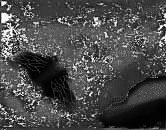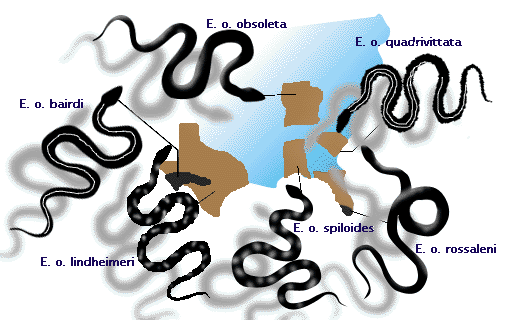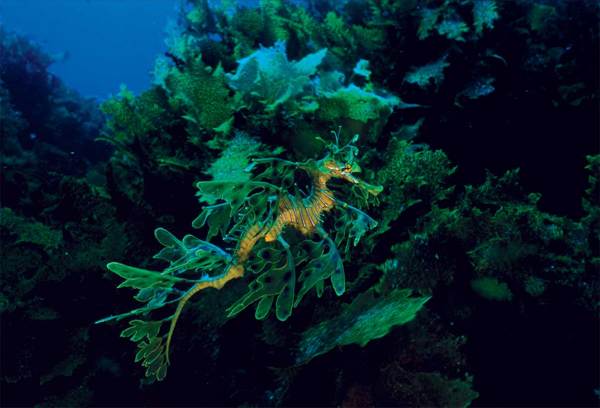Please watch the video below and write one paragraph about one of the following topics discussed, making tools, imitation or copying, cooperation, social emotions, math/symbol skills, communication.
Video - Ape Genius
What do you see?
Look closely. There is an animal hiding in the kelp. This unique creature—a leafy sea dragon—closely resembles the kelp in its ocean environment. Predators have a hard time seeing this animal. The sea dragon’s appearance is an example of an adaptation.
Have you ever seen an animal that blended in with its environment? Most species over long periods of time have developed ways to hide from predators. Looking like their environment is one way that organisms avoid being eaten.
Evidence of Natural Selection
Let's
look at an example to help make natural selection clear.
Industrial melanism
is a phenomenon that affected over 70 species of moths in England. It has been
best studied in the peppered moth, Biston betularia. Prior to 1800, the
typical moth of the species had a light pattern (see Figure 2). Dark
colored or melanic moths were rare and were therefore collectors' items.
 Figure 2. Image of Peppered Moth |
During the
Industrial Revolution, soot and other industrial wastes darkened tree trunks and
killed off lichens. The light-colored morph of the moth became rare and the dark
morph became abundant. In 1819, the first melanic morph was seen; by 1886, it
was far more common -- illustrating rapid evolutionary
change.
Eventually light
morphs were common in only a few locales, far from industrial areas. The cause
of this change was thought to be selective predation by birds, which favored
camouflage coloration in the moth.
In the 1950's, the
biologist Kettlewell did release-recapture experiments using both morphs. A
brief summary of his results are shown below. By observing bird predation from
blinds, he could confirm that conspicuousness of moth greatly influenced the
chance it would be eaten.
Recapture
Success
|
light
moth
|
dark
moth
| |
|
non-industrial
woods
|
14.6
%
|
4.7
%
|
|
industrial
woods
|
13
%
|
27.5
%
|
____________________________________
Penguin Adaptation
Penguins are designed for life in
the sea. Some species spend as much as 75% of their lives in the water. (They
lay their eggs and to raise their chicks on land.) Heavy, solid bones act like
a diver's weight belt, allowing them to stay underwater. Their wings, shaped
like flippers, help them "fly" underwater at speeds up to 15 mph. A
streamlined body, paddle-like feet, insulating blubber, and watertight feathers
all add to their efficiency and comfort underwater. They also have a remarkable
deep-diving ability.
In addition to blubber for
insulating warmth, penguins have stiff, tightly packed feathers (up to 70 per
sq. in.) that overlap to provide waterproofing. They coat their feathers with
oil from a gland near the tail to increase impermeability. Black and white
countershading makes them nearly invisible to predators from above and below.
Like most birds, penguins have
little or no sense of smell (a boon for those in a crowded penguin rookery!)
Like other birds, their sense of taste is also limited. Their vision appears to
be better when they are underwater. Scientists suspect they may be nearsighted
on land.
Penguins are considered to be the
most social of birds. Rookeries may contain thousands of individuals. (As many
as 24 million penguins visit the Antarctic continent!) Even at sea, they tend
to swim and feed in groups.
Local
Adaptation - More Examples
So
far we have emphasized that natural selection is the
cornerstone of evolutionary theory. It provides the mechanism for adaptive
change. Any change in the environment (such as a change in the background color
of the tree trunk that you roost on) is likely to lead to local adaptation. Any
widespread population is likely to experience different environmental conditions
in different parts of its range. As a consequence it will soon consist of a
number of sub-populations that differ slightly, or even
considerably.
The following are
examples that illustrate the adaptation of populations to local
conditions.
- The rat snake, Elaphe obsoleta, has recognizably different populations in different locales of eastern North America (see Figure 3). Whether these should be called geographic "races" or subspecies is debatable. These populations all comprise one species, because mating can occur between adjacent populations, causing the species to share a common gene pool.

Figure 3:
Subspecies of the rat snake
Animals and plants are adapted to the conditions of the habitats in which they live.
| Guess what? Animals even live in Antarctica! The animals in Antarctica are dependent on the sea for feeding or are migratory and leave the continent when the winter arrives. |
| What is an adaptation?An adaptation is a way an animal's body helps it survive, or live, in its environment. Camels have learned to adapt (or change) so that they can survive. |
Each adaptation has been produced by evolution. This means that the adaptations have developed over many generations.
Examples of the basic adaptations that help creatures survive:
- shape of a bird's beak,
- the number of fingers,
- colour of the fur,
- the thickness or thinness of the fur,
- the shape of the nose or ears
Mimicry is adapting to look like something else. An example would be the hawkmoth as it looks just like a dead leaf, tattered and veined.


0 comments:
Post a Comment